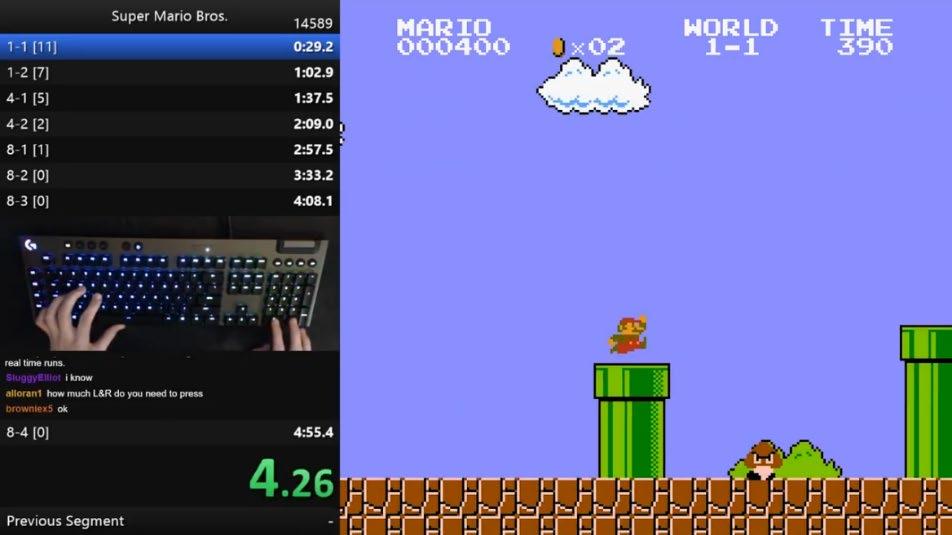
4 minute read
5.2.3. Action
as Amy (Perception prototypes) and Nate (TestingHouse). Amy enjoyed the sounds that would play upon picking up a coin in the control game to such an extent that she went out of her way to collect as many coins as possible, frequently doubling back after missing some. After not shooting Olivia in the basement, Nate (a non-player) spent a good two minutes next to her, pressing all the buttons on the keyboard and otherwise attempting to somehow interact with her, because of his expectation that a digital game would always provide opportunities for rewarding action. He later attributed this behaviour to his preference for action cinema and close associations between this media form and digital games as category. Simply put, these two players pursued the kinds of interaction they found personally rewarding in digital games – in the case of Nate, however, this pursuit was not a success.
5.2.3. Action
The action component of ludic habitus implements behavioral patterns during play, thus providing input for the hardware/software system of the game. As part of this process, the player utilizes and develops their personal action competencies in a moment-to-moment interaction with the game system, mediated by its input methods (e.g. the controller, the keyboard/mouse, the touchscreen, the Kinect camera). By “action competencies,” I here refer to what Juul (2005, pp. 95-97) would call the player repertoire: a collection of skills for playing a particular game. These competencies have a physical element – i.e. the pressing of a button, the movement of a Wiimote – but also a virtual element – i.e. an in-game action to which this physical action is mapped.
Action competencies are always acquired not just in relation to a particular game or generic subfield, but also, crucially, in relation to a particular method of input used to play the game45 . A good illustration of this is Milo (TestingHouse), who initially had a hard time playing the game because he was not used to using the mouse to move the camera. His experiences with FPS games were restricted to older examples of these games on the PC, such as Doom (iD Software, 1993), which were entirely played using the keyboard. Milo’s difficulties with TestingHouse showcase how all elements in the chain which links physical action, input method,
45 As mentioned by Andreas Gregersen and Torben Grodal (2009), physical actions – such as the pressing of a button on a controller – can be mapped to the game system in different fashions, with certain mappings being standardized in console and PC games and linked to certain genres. These mappings are also discussed by Kristine Jørgensen (2013, pp. 21-22) in the context of digital game interfaces (understood in both hardware and software terms) as mediators between the player and the game system.
virtual interface, and the game system are conventionalized and interrelated –both when it comes to players and their action competencies, and when it comes to generic configurations of game design. In turn, a lack of a generic action competency – e.g. the inability to equip a gun in a PC FPS game, as was the case with Nate, who wanted to shoot Olivia – is a barrier for intended play behavior, as the player literally cannot do what they want to do.
Much like taste patterns and perceptual models discussed before, the action competencies on this tier of ludic habitus also grow and evolve over time and with exposure to different kinds of games and generic subfields. As demonstrated by Mark and Logan (Perception prototypes) during their playing of the control game in the first study, overreliance on these competencies –brought about by misperceiving one game as similar to some other, previously played game –can result in performance mistakes during gameplay. In such cases, and to overcome a difficult situation in-game, the player has to create a new perceptual model and channel it through experimentation into novel behavior, incrementally expanding and altering their action competencies as they do so. These processes – fundamentally processes of learning about digital games and the gameplay gestalts (Lindley, 2002) that they feature – are part and parcel for the growth of a player’s ludic habitus, and occur as a fundamental part of concrete acts of digital gaming practice.
However, as exemplified by Kyle (TestingHouse), it is not always necessary to alter a behavioral pattern, even if it might not be the intended way of playing a particular game. If a player perceives the game as in some way familiar, and the style of play that they want to employ is supported by the game, the game system will not stop them from doing so. This is especially common in games with a wider possibility space, that offer players multiple methods or modes of play – one illustration of this being the equally valid possibilities of killing and not killing any enemies in a game like Undertale (Toby Fox, 2015). In fact, designers of games like Undertale draw on the player’s habitual methods of perceiving and behaving in games, developed over multiple acts of play and with exposure to genre conventions in a generic subfield, to subvert player expectations and experiment with genre and game design tropes, thereby further evolving generic subfields and the field of digital games as a whole. Appropriately enough, this brings us to two important temporal properties of ludic habitus that were highlighted in the studies: tendencies and attunement.





